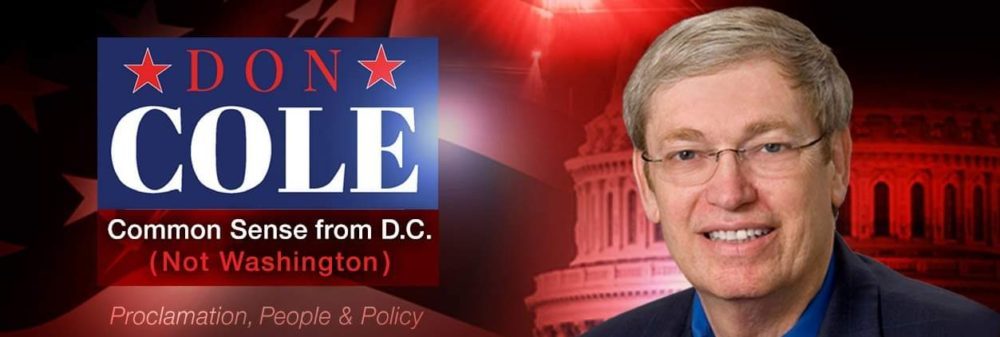The “Hate Donald Trump” show in Congress dropped the curtain on its final act. Donald Trump was acquitted in the Senate trial and that saga is finally over for now at least.
The proceedings were called an impeachment but that is a misnomer. An impeachment is a trial to remove a current office holder from office.
I will yield to the House of Representatives regarding the definition and acknowledge that the House did, in fact, impeach President Donald Trump twice. The 2nd time was in a rushed seven hour Kangaroo Court lacking any semblance of American due process and rights of the accused.
President Joe Biden was sworn in on January 20, 2021. Donald Trump became a private citizen and thus no longer held office.
Democrats, joined by a few Republicans argued that Article I, Section 2 of the Constitution allowed impeachment of a former office holder because the clause reads,
“Judgment in Cases of Impeachment shall not extend further than to removal from Office, and disqualification to hold and enjoy any Office of honor, Trust or Profit under the United States:”
Article 1, Section 2 Constitution of the United States of America
Common sense (sorely lacking in Washington) reasons that one cannot be removed from an office that he or she no longer holds.
It was that “, and disqualification” that was the target on Donald Trump’s back. Democrats do not want Donald Trump to come back and they desperately wanted to get the votes to disqualify him from office in the future.
I watched most of the Senate trial the first day on the matter of whether or not it was Constitutional to impeach Donald Trump, the private citizen. In all the debate, it seemed that there was one glaring absence from the chambers indicating that the proceedings were unconstitutional.
Which branch of government is specifically charged with interpreting the Constitution? Hopefully your answer is the Judicial branch.
Article I, Section 3 reads: “When the President of the United States is tried, the Chief Justice shall preside.” In effect, Supreme Court Chief Justice John Roberts, ruled on the constitutionality of impeaching private citizen Trump for actions while serving as President.
When Roberts refused to preside over the trial, he ruled by his behavior that he had no Constitutional role in whatever it was that the US Senate was doing.
If Trump was being impeached for actions as President, then the Chief Justice should preside. If Roberts refused to preside then, the simple truth is that Roberts ruled that this was not the impeachment of the President.
If Trump was not being impeached for actions as President, then for what was he being impeached? This is a great disconnect in logic, but, then again, I am talking about Washington.
It is important that we understand the implications of the case in light of our Constitutional rights. Failure to defend those rights will lead to tyranny and loss of personal liberty.
The 1st Amendment reads:
“Congress shall make no law respecting an establishment of religion, or prohibiting the free exercise thereof; or abridging the freedom of speech, or of the press; or the right of the people peaceably to assemble, and to petition the Government for a redress of grievances.“
Amendment 1, Constitution of the United States of America
Make careful note of the highlighted final two phrases. Hundreds of thousands showed up in Washington to peaceably assemble. Hundreds of thousands were in Washington to call on congress to object to the electoral votes presented by several states. They had grievances and were petitioning government for a redress of grievances.
Whether anyone agrees with those grievances is irrelevant. The Founding Fathers specifically did not include a list of “approved” categories or persons charged with the responsibility to determine whether or not the people had a valid reason to assemble or petition the government for redress of grievances.
It is actually the other way around. The burden is on the government to prove a compelling reason to limit or restrict these rights.
Out of hundreds of thousands gathered exercising their 1st Amendment rights, a few came to Washington with different intentions. Their true intent was anarchy and criminal behavior which is not protected by the 1st Amendment.
President Trump and every Republican condemned the criminal actions of the violent mob. That small violent group did not represent the hundreds of thousands, including President Trump, who came to peaceably assemble and petition the Government for a redress of grievances.
Trump could no more be blamed for the criminal behavior of a few in Washington that day than Bernie Sanders and Democrats could be blamed for the actions of James Hodgkinson who shot Congressman Steve Scalise and three others, including one Capitol Police officer, at a baseball field on June 14, 2017.
Democrats went after Trump portraying him as engineering and inciting a violent attack on the Capitol. They took quotes out of context, doctored videos, and refused to acknowledge the hundreds of times accusers used the exact same language with impunity.
Once again, Democrats missed the target and Trump still lives to fight* another day. He made it clear that he intends to keep fighting*
Where to now? As Donald Trump often says, “We’ll see.”
*(Disclaimer – all references to the words “fight, fighting, or any semblance thereof should be construed as figurative language and not intended to convey any message implying that any person should inflict emotional or physical harm on any human, animal, plant or mineral.)
